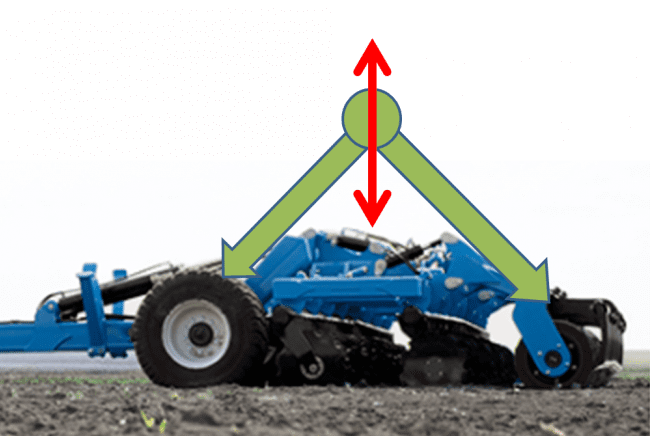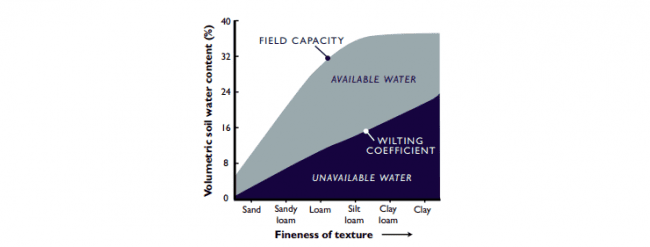As winter is slowly starting to loosen its grip, there is talk of a later than normal spring. Are we going to have a shorter window than normal to complete the normal spring work? How much work is still left over from a very challenging fall? Read below how you can put your best practices into place on your farm this spring to get your crop in and growing as soon as conditions are fit.
Managing Negative Side Effects and Limiting Potential Damages
I had good intentions to complete several tasks this fall, but it would have been a bad decision if I moved forward because the field conditions were not right. I chose to leave the ruts in the field and approach them in the spring. The soil was too wet to do any good by leveling them out.
Paul Jasa, Nebraska Extension engineer had an article that talks a little about fall tracks. Here is an excerpt: “The first impulse may be to do deep tillage to rip out that compaction to be able to plant in spring. However, the combine ruts themselves are going to compact 2 to 3 feet into the soil. Any surface tillage will fill in the ruts so your planter can cross them, but it won’t fix compaction. With compaction that deep, its wetter down deep, and you can’t break compaction on wet soil. You’re going to have to live with it the next season, so it’s best to minimize what you’re creating this fall.”
Now is a Great Time to Evaluate Soil Conditions and Plan for Spring Soil Management
- Were you able to harvest all your crops?
- Did you complete all the field work this fall?
- Did you have lodged crops and fodder that were managed the way you would like?
- Do you have combine and grain cart ruts still out in the field?
Does Spring Tillage Work for You?
Spring tillage is one tool in your toolbox that might be used for the following:
- Drying poorly-drained soils
- Incorporate a herbicide or fertilizer application
- Warm and dry wetter soils
- Incorporate lodged crops that were not taken care of in the fall
- Weed takeout
- Fix ruts or pre-plant field preparation
When you think about spring tillage what comes to mind. A cultivator? A soil finisher? Or a vertical till machine? A solution that not everyone thinks about is the Kinze Mach Till.
Kinze Mach Till can be utilized not only in the fall, but also in the spring to get exceptional seedbed preparation. Customers and dealers instantly see the value it has in the fall, but are uncertain about using it in the spring.
Consider the Following Examples:
Say you currently utilize a 45′ cultivator. It weighs roughly 23,000 lbs. At 7 mph it covers roughly 30 acres/hr. and you need around a 400 HP tractor to pull it. The cultivator only gets utilized during the spring.
Now compare that to a 26′ Mach Till. It has the same weight at 23,000 lbs. At 13 MPH covers roughly 48 acres per hr. and you can pull it with the same 400 HP tractor. Not only can it be utilized for fall field work, but also spring, this gives you additional return on your investment.
How Do I Minimize Compaction With Spring Tillage?
A question high on your list might be, “What about compaction?”
It is important to keep in mind, any machine has the potential to cause compaction if you work your soils too wet.
Kinze Mach Till is a hybrid horizontal tillage tool that combines the benefits of vertical tillage, conventional tillage and soil finishing tools into one versatile machine.
Mach Till cuts and throws the soil at an angle to avoid creating a smear or compaction layer in the soil, and then mixes the soil and residue together. The corrugated rubber roller on the back of the machine sheds soil, and breaks up larger clods, while gliding through the field.
Is the weight of your cultivator spread out to decrease the PSI felt by the soil?
This hybrid machine has taken it into account – it has an extremely wide tire footprint for maximum flotation. The shape of the contact area is specially designed to minimize the impact on soil structure. Adding to the flotation is the rear furrow roller; specifically further spreading out the PSI felt by the soil.

Kinze, as well as customers, have tested Mach Till in spring conditions, and have had great results.
As I mentioned earlier caution is necessary when using tillage to dry the soil’s surface because tillage can result in compacted subsurface soil layers. It can be tempting to jump the gun and not wait long enough for the soil to dry.
The greatest probability for causing soil compaction takes place a couple of days before the soil is dry. Iowa State University Extension soil management specialist Mahdi Al-Kaisi has a few easy checks to help you determine if it is dry enough, “Be careful not to enter the field if the drainage tiles are still running, which means the soil is above field capacity. You need to inspect the field and make sure that soil moisture is at or below field capacity by the simple test of taking a handful of soil and squeezing it in your palm; if you notice a trace of moisture on your palm, it is too wet to enter the field.”

I am sure after reading this advice you are concerned about having enough time to cover your acres before planting. Not to worry Mach Till has you covered.
This spring, like most, will be a sprint to get the crops in the ground quickly; Mach Till can cover ground quickly after the soil is fit and stay in front of your planter to optimize planting windows.
- Mach Till 201: 30 acres/hr
- Mach Till 261: 40 acres/hr
- Mach Till 331: 50 acres/hr
- Mach Till 401: 60 acres/hr
Have You Considered the Other Agronomic Benefits Designed Into Mach Till?
- Increased Water Absorption: The micro-ridge shape of the Mach Till rollers allow water to be stored in the corrugated valleys, absorbing to the lower soil layers and stored in a uniform way.

- Faster Germination: Effective soil to seed/root contact enables an efficient transfer of nutrients combined with minimal moisture loss, especially important during dry years.
- Erosion Minimization: Prevent surface crusts and allow the soil to breathe. Properly combined, prepared soil, and residues with micro-ridges reduces wind speed at the surface and diminish wind erosion.
- Gas Exchange: Healthy soil must be allowed to breathe. Tillage can drastically change the configuration, continuity and size of soil pores. This exchange of gases is the secret to the Mach Till rollers: the trapezoidal shape of the rollers will form the soil profile and lightly pack the soil vertically as well as laterally. A lightly compacted zone next to a less compacted zone set in ridges is the optimum method to allow a rapid exchange of carbon dioxide and oxygen between the soil pores.
- Soil Structure: Equalized soil density after a tillage pass across the full machine, unlike most spring tools.
Mach Till combines the benefits of many tillage tools into one product that that makes it multipurpose, covering acres at high speed, provides uniform residue management, and a planter-ready soil finish.
Does your current spring tool have all these benefits working for you? Remember tillage is a tool in the toolbox; don’t take your soil for granted!
